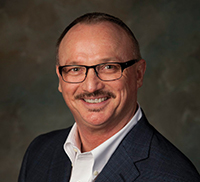Microsoft debuts artificial intelligence safety software
Microsoft Corp. has debuted artificial intelligence (AI) software that could play an important role in future occupational safety programs that eventually could become mandatory, safety and legal experts told Bloomberg BNA. The software identifies workers and dangers in the workplace.
However, attorneys say legal issues could emerge if the Occupational Safety and Health Administration (OSHA) uses the information to investigate or cite employers.
At Microsoft Build 2017 in Seattle in May, Microsoft debuted its growing capabilities in AI programs, which use some of the same concepts that enable a smartphone camera to focus on different faces or a laptop to identify people in photographs.
Microsoft demonstrated a system that could detect when a construction worker mishandled a power tool, identify which workers were removing tools from a storage area and identify who had entered a hallway without authorization. The technology also can monitor storage areas in real time to detect chemical spills or items falling off shelves.
If the AI decides there is a hazard, it alerts a supervisor about the problem through the manager's smartphone.
During the Microsoft Build 2017 presentation, Andrea Carl, director of commercial communications at Microsoft, said the information in the Microsoft system is intended to be easily updated by workers. On a worker's first day, the employee could be entered into the system by simply taking his or her picture with a smartphone and uploading the picture and other identifications to the cloud-based system. Microsoft did not offer a date for when the technology will be available to companies.
Jeff Lancaster, president of Lancaster Safety Consulting Inc., Wexford, Pa., said using an AI-enabled monitoring system could conceivably become mandated by OSHA through enforcement of the agency's general duty clause. That provision requires employers to provide a workplace free of known safety hazards that can be mitigated.
Garry Mathiason, an attorney who chairs Littler Mendelson PC's AI and robotics practice in San Francisco, says the same privacy requirements for existing surveillance systems that record but don't analyze images generally would apply to AI systems. He says employees and others coming onto work sites will have to be notified of the systems, which can be achieved in some cases by posting a sign. There also may have to be provisions made for areas where privacy is expected. Mathiason says recording audio in addition to pictures would pose greater privacy issues.
Although Steven McCown, co-chair of Littler Mendelson's workplace safety and health practice group, recognizes the benefits of the AI-enabled system, he says it raises questions about how OSHA might try to use the video recordings.
McCown says OSHA certainly would request and receive recordings of incidents under investigation and also may ask to see recordings for other times and review the recordings to find incidents of which the agency wasn't aware; such actions could result in citations for alleged violations inspectors didn't witness in person or lead the agency to revisit a site to determine whether a recorded hazard still existed.
McCown recommended companies retain the recordings for at least six months—the current statute of limitations for OSHA to cite violations—to prevent an employer from being accused of destroying evidence sought by OSHA and enable the employer to use the video to defend itself.
Tim Kersey receives ASTM International's Award of Merit

Kersey |
ASTM International has announced Tim Kersey, vice president and general manager for SOPREMA® Inc., Wadsworth, Ohio, will receive the Award of Merit from ASTM International's Committee D08 on Roofing and Waterproofing.
Established in 1949, the Award of Merit is ASTM International's highest recognition for individual contributions to developing standards and includes an accompanying title of fellow. The committee will honor Kersey for his outstanding leadership, distinguished service and personal commitment, particularly his dedication to the development and improvement of specifications, test methods and practices for polymer-modified bituminous roof systems and products.
An ASTM International member since 1988, Kersey previously received ASTM International's Distinguished Leadership Award in 2011 and its Award of Appreciation in 2004 and 2012. Kersey also is active in the Asphalt Roofing Manufacturers Association, FM Global Advisory Council, NRCA, RCI Inc., and SPRI.
COMMENTS
Be the first to comment. Please log in to leave a comment.